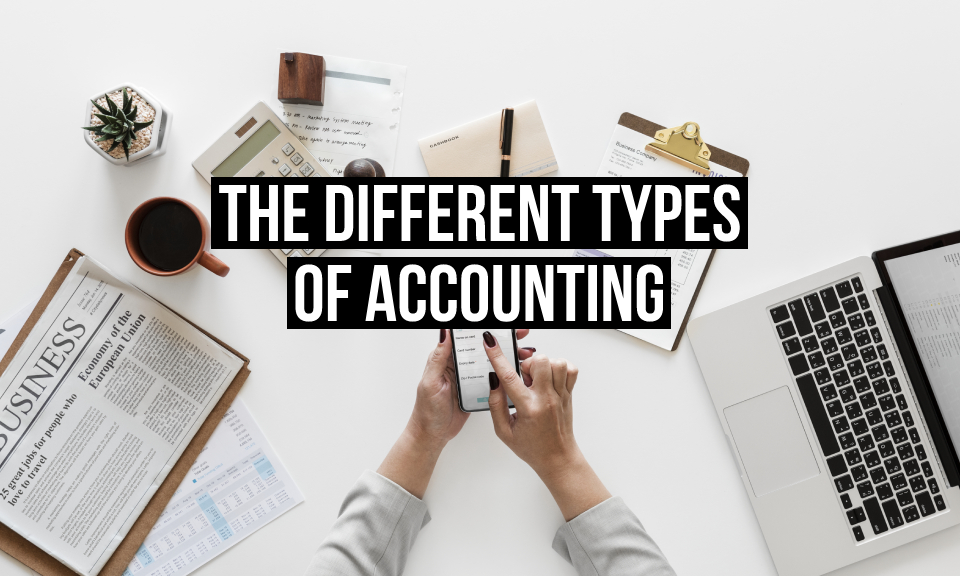If you’ve recently started a business, you may be surprised to learn that there is more than one type of accounting. In fact, there are a variety of different accounting methods, terms, and systems available that each analyse different aspects of your business.

This article outlines the top 4 accounting types that your business should be aware of. We’ll explain how each of them works, in which cases you should use them, and which accounting documents are required.
Try accounting software for free
1. Financial accounting
We’ll start with the most commonly used accounting method in the business world. Financial accounting is used to prove the financial health of a business to external parties, including investors, creditors, and suppliers.
It is mainly used to attract investors and financing opportunities, but can also be made public for customers to show the business’ financial position. The following documents are also used internally to make decisions about future activities.
Financial accounting documents
The documents used in financial accounting include:
- The profit and loss statement: Also known as the income statement, this shows the business’ revenues and expenses incurred within a period of time. It is one of the most important reports for measuring the success of a business.
- The balance sheet: This shows what the business is worth by including the business’ assets, liabilities, and capital. It is used to measure the efficiency of a business.
- The statement of retained earnings: This report shows how much profit has been retained by the business after dividend payments and any other payments to investors have been issued. It is used to support future growth projects.
- The cash flow statement: This report shows the incoming and outgoing money the business had within a specific period, and further categorises them into different activities. It is used to measure the liquidity of a business.
Your business may not require all of these documents. If you’re a small business looking for financing, the profit and loss statement might be enough to prove your financial stability.
2. Management accounting
Unlike financial accounting, management accounting is used for internal purposes. Like its name suggests, it is a method to help the management team make decisions about the company’s budget, and to forecast future outcomes.
Management accounting is confidential and is usually only shared with high-level stakeholders and the CEO. It is designed to share information about the business’ performance and to form logical next steps.
The different types of management accounting
There are 3 common types of management accounting that each perform a different function:
- Risk management: This involves identifying threats to the business’ profits and helps the management team create processes to reduce these risks.
- Strategic management: This involves monitoring and planning major initiatives and goals of the business.
- Performance management: This involves monitoring the performance of existing goals and making changes to processes if goals are not met.
Managers may choose one or two types of management accounting to focus on, depending on what they are trying to achieve. However, all 3 types can be used simultaneously.
3. Cost accounting
Cost accounting is also used internally to identify the exact costs linked to each product or service your business sells. It shows the actual cost of doing business.
Cost accounting is generally used in production and manufacturing environments and looks at both the fixed costs and variable costs of producing an item.
Fixed costs are recurring costs that do not change based on time or production. For example, a rental lease or salary payments. Variable costs, like the name suggests, vary based on different factors like time and items produced. This may include materials purchased to manufacture a finished product, or shipping costs.
The different types of cost accounting
There are a variety of different types of cost accounting, including:
- Standard costing: This form of cost accounting assigns ‘standard costs’ to products instead of actual costs. Standard costs are always incurred during normal business operations (e.g. labour or materials). Standard costing allows businesses to budget for future operating costs.
- Activity-based costing: This method assigns overhead costs to specific activities, otherwise known as cost pools. This costing method allows businesses to determine exactly how much each activity is costing the business per item produced, and make changes accordingly.
- Marginal costing: This method calculates the increase or decrease in costs if producing one additional unit. This helps a business determine if it is financially viable to produce additional units.
4. Tax accounting
Tax accounting focuses on taxes for both businesses and individuals. In business, this method of accounting helps you to complete your Self Assessment Tax Return, or your Company Tax Return.
Put simply, tax accounting is the process of recording your income, expenses, and payments to calculate how much tax your business owes or is due. Every business at one time or another will use tax accounting, or hire an accountant to assist them with this.
Summary - Accounting methods
There are a number of different accounting methods that look into different aspects of a business. The main 4 methods in the business world are:
- Financial accounting is used to prove your business’ financial stability to external parties, such as investors.
- Management accounting is used by internal stakeholders to make decisions about business processes.
- Cost accounting is used mainly in the manufacturing sector to identify the costs related to manufacturing products.
- Tax accounting is used to complete your tax return and calculate how much tax you owe to HMRC.
If you want to set yourself up for success, you can try Debitoor accounting software for free. The software includes important accounting reports like the profit and loss statement and the balance sheet. Every time you create an invoice or record a payment, your reports are updated automatically.
